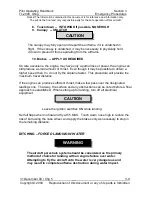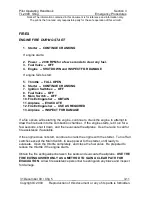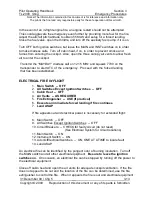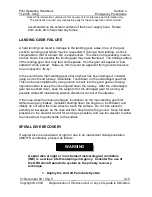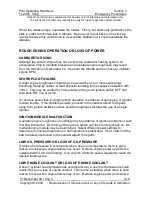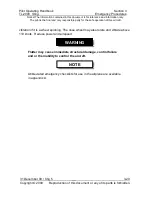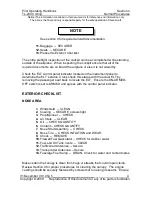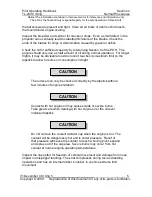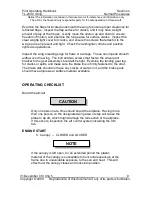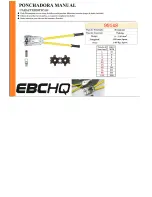
Pilot Operating Handbook
Section 3
TL-2000
Sting
Emergency Procedures
Notice! The information contained in this document is for reference and information only.
The pilot is the final and only responsible party for the safe operation of this aircraft.
31 December 09 / Chg 5
__
3-14
Copyright © 2009 Reproduction of this document or any of its parts is forbidden.
is needed to complete the flight, ensure that all electrical switches are still off, and
check the circuit breakers. A “popped” circuit breaker is key to identifying the faulty
system, but do not reset any beaker that has “popped” (Either a CB or SCB) because
this could restart the electrical fire.
If you must attempt to troubleshoot the problem, first turn off all electrical equipment
and all switches. Next, turn on the main switch and instrument switch. Then proceed
to turn on each electrical system one by one. This will help to identify the faulty
system if the electrical fire restarts. If the fire does restart, turn off the last switch that
was turned on. Be prepared for an emergency landing, and land as soon as
possible.
If you choose to troubleshoot any problem when airborne,
remember that the main priority in any airborne situation is to fly
the airplane. Do not focus all attention on fixing the problem,
which is
post-flight
maintenance.
CABIN FIRE
1. Main Switch -- OFF
2. Cabin Heat -- OFF
3. Air Vents -- AS REQUIRED
4. Fire Extinguisher -- USE AS REQUIRED
5. Execute a forced landing if fire continues
6. Land ASAP
The most important thing to remember in a cabin fire is to
fly the airplane
and do not
allow the situation to cause panic and distraction from the primary activity of aircraft
control. Turn off the main switch to cut electrical power supply in case faulty
electrical systems were the cause of the fire. Close the cabin heat in case the fire
came from the engine compartment. Open the air vents as required to allow for
ventilation, but be cautious not to feed the flames with fresh air. Use the fire
extinguisher located between the seats to fight the fire, and land as soon as possible.
The first use of cabin heat of the winter season may produce some
cockpit smoke or fumes from oil or hydraulic fluid that may have
NOTE
WARNING
WARNING










